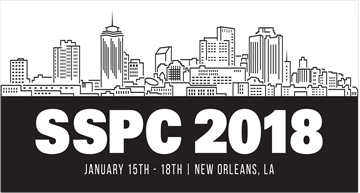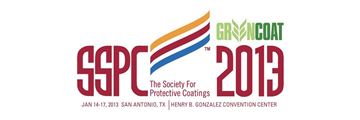Search
SSPC Conference Papers
Legacy SSPC Conference Papers
View as
Sort by
Display
per page
Application of Methacrylate Polymer Flooring: 45,000 Square Foot Supermarket in For Days
Product Number:
41206-281-SG
Publication Date:
2006
$20.00
Application of Protective Coating for Rehabilitation of Wisconsin Concrete Bridges
Product Number:
41208-415-SG
Publication Date:
2008
$20.00
Application of the STEM Program to Corrosion Engineering
Product Number:
51217-040-SG
Publication Date:
2017
$20.00
Application Study on the Performance of Polyurethane Paint as a Green Coat Using Biobased Coconut Polyol Resin for Protective, Marine and Industrial Coatings
Product Number:
41211-602-SG
Publication Date:
2011
$20.00
Applying Common Sense to Moisture Vapor Emissions and Moisture Content Test Requirements When Coating Below Grade Concrete Structures in Wastewater Applications
Product Number:
41216-989-SG
Publication Date:
2016
$20.00
Applying Linings to Concrete Surfaces in Water and Wastewater Environments
Product Number:
41205-153-SG
Publication Date:
2005
$20.00
Architectural and Industrial Maintenance (AIM) Regulatory Update and Forecast
Product Number:
41211-599-SG
Publication Date:
2011
$20.00
Are you Ready to Pursue Today’s Greatest Market Opportunity In the Coatings Industry? Millions of Square Feet of Commercial Walls Need Air Barriers. What do you Need to Know to be a Part of this Emerging Market?
Product Number:
41216-957-SG
Publication Date:
2016
$20.00
Are You Restricted by Your Total Solar Reflectance Performance?
Product Number:
41213-749-SG
Publication Date:
2013
$20.00
ASSESSMENT OF NOVEL COATINGS IN COMPARISON TO CONVENTIONAL ZINC-RICH COATING FOR BRIDGE APPLICATION
Product Number:
51218-105-SG
Publication Date:
2018
$20.00
Assessment of CBPC Coating in Wet Exposure
Product Number:
51216-004-SG
Publication Date:
2016
$20.00
Asset Corrosion Protection Program - San Antonio Power Plants
Product Number:
41213-782-SG
Publication Date:
2013
$20.00












